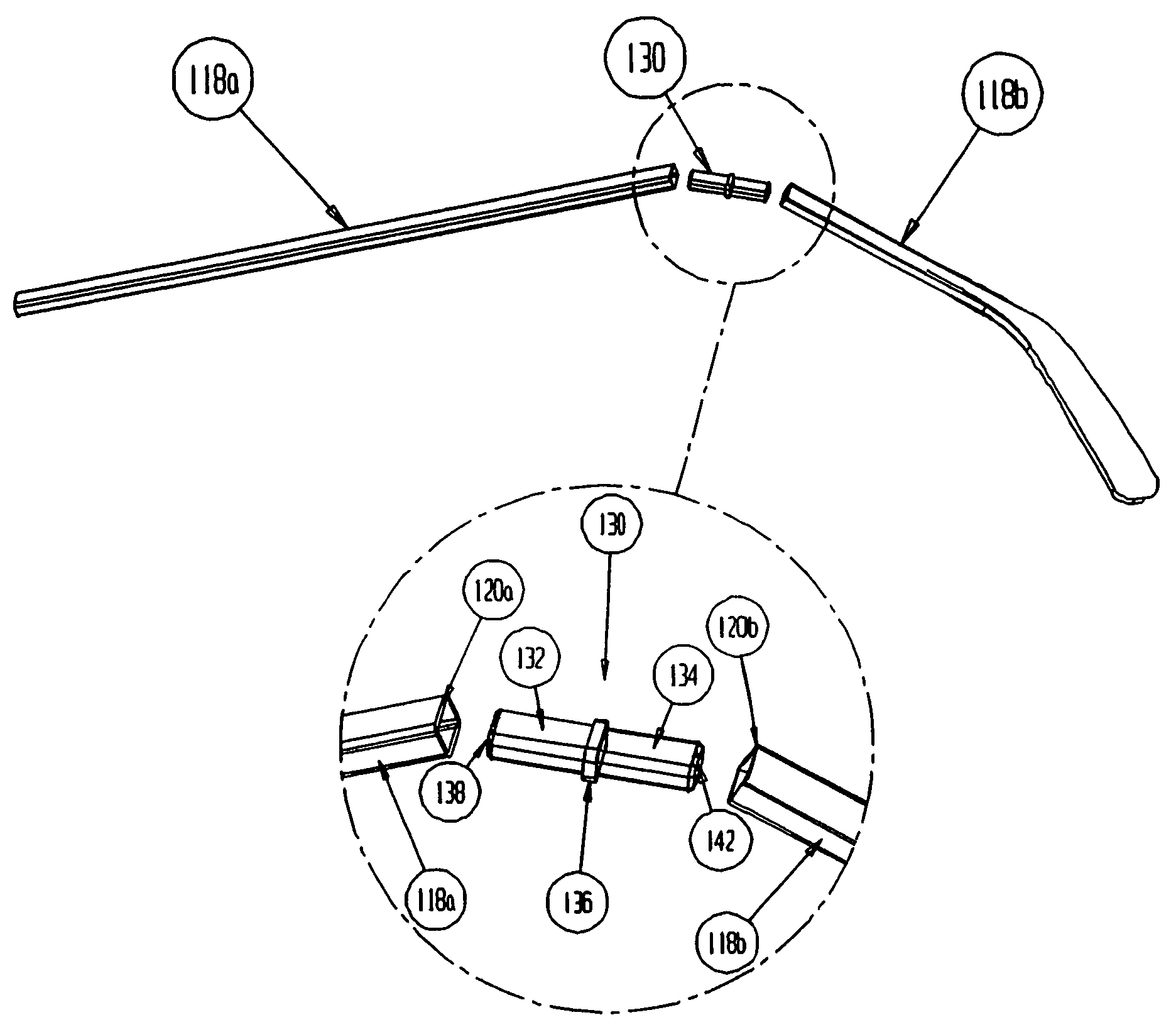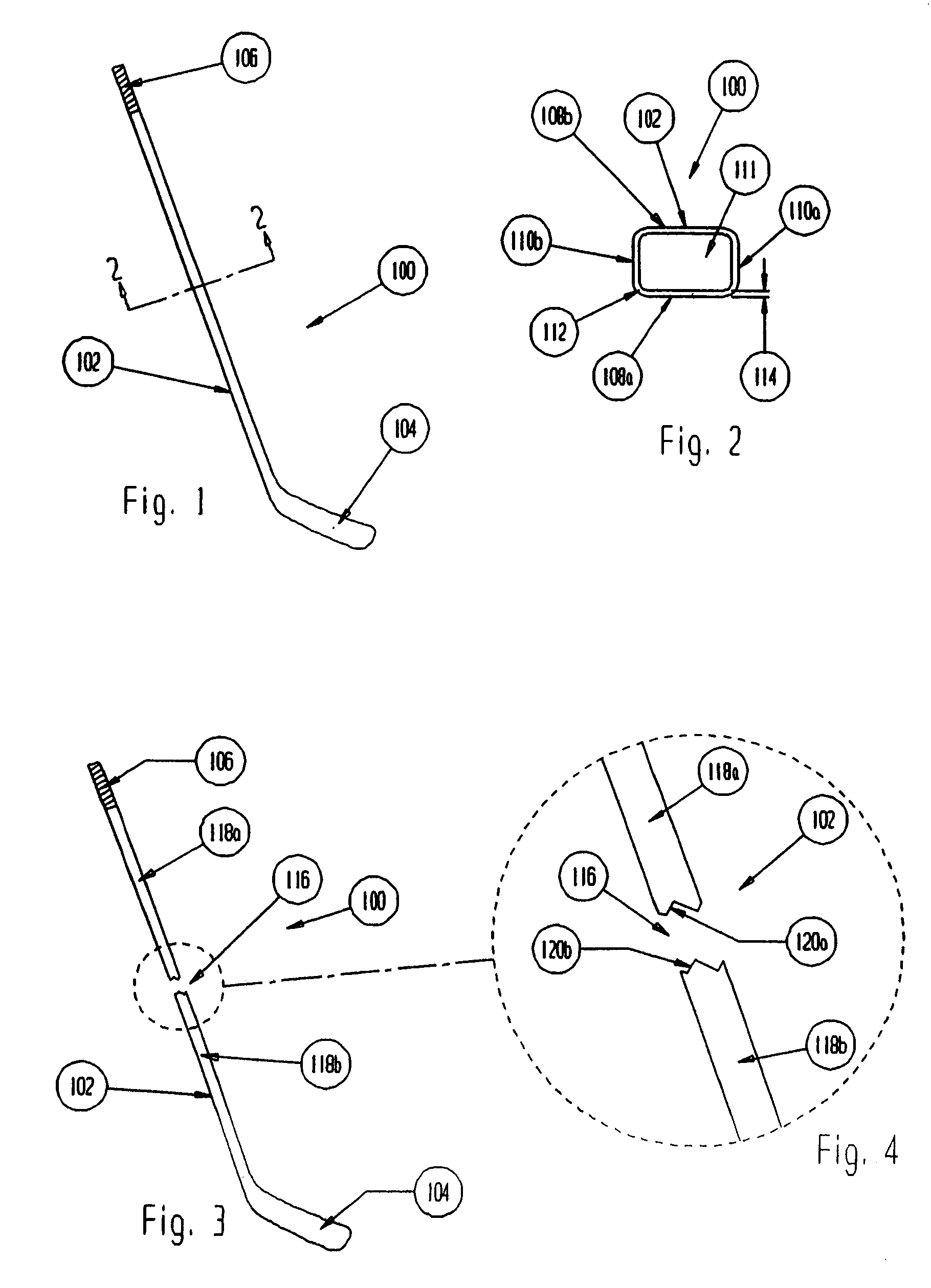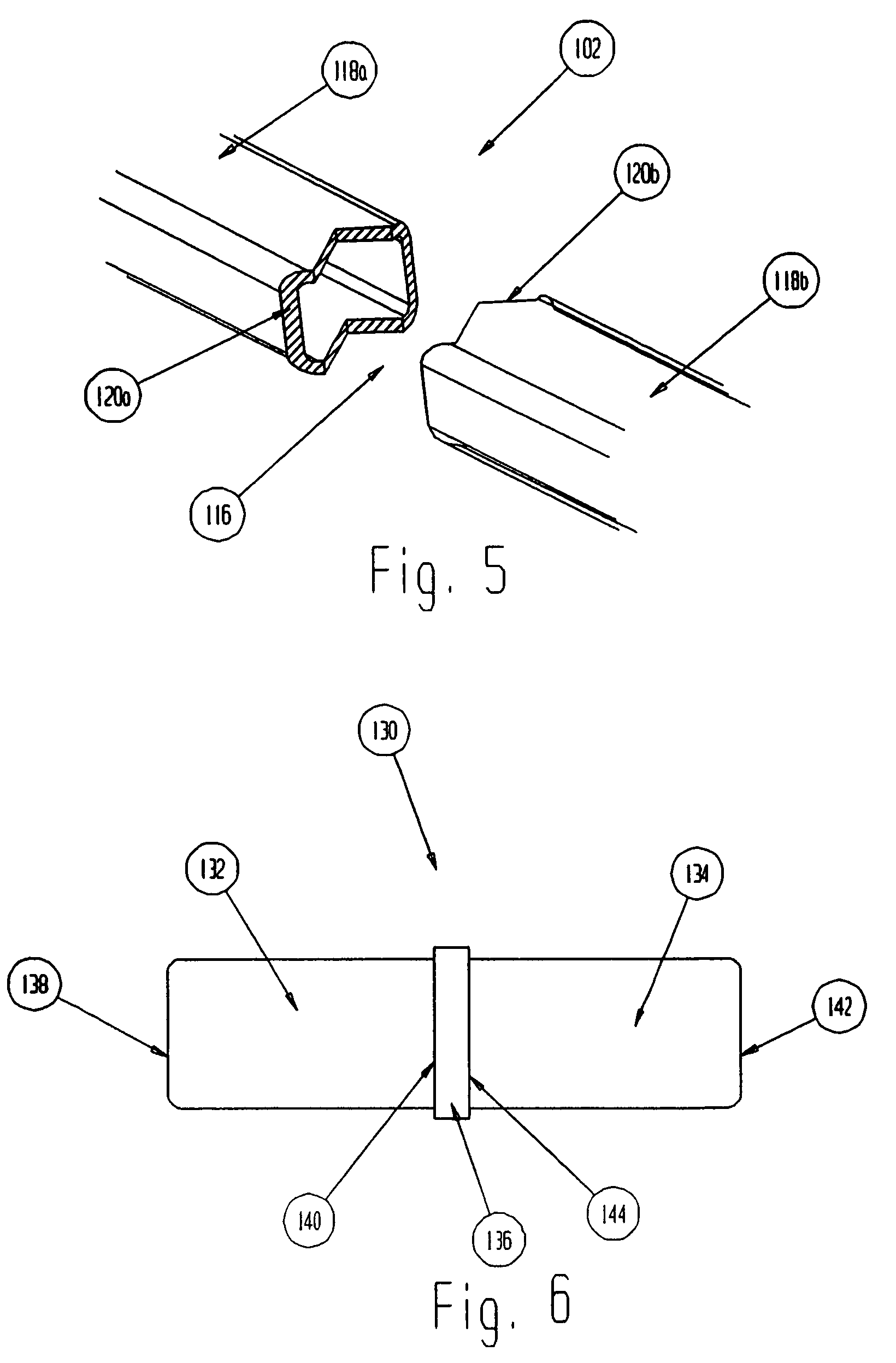[0007]In one aspect, the present invention comprises a repair member for use in repairing hollow shafted hockey sticks. In one presently preferred embodiment, a shaft repair insert can quickly and safely repair a broken, hollow-shafted hockey stick so as to restore the hockey stick to its prior condition such as, for example, similar performance, appearance and overall usability. The shaft repair insert of the present invention allows suppliers to provide users with a repair option allowing them to substantially decrease and eliminate warranty replacement costs as well as negative perceptions associated with the breakage of expensive hockey sticks.
[0008]In another aspect, the present invention can comprise is a shaft repair insert comprising two insertion portions and a spacer portion. The two insertion portions are adapted for insertion into a broken, hollow-shaft and can include features to promote adhesion with the hollow shaft such as adhesives, coatings, surface treatments, barbs and other appropriate means. The shaft repair insert can be manufactured of any of the materials commonly used in constructing hockey sticks and does not require the shaft repair insert use the same material used in constructing the hollow shaft. The shaft repair insert can be manufactured in a variety of cross-sectional configurations such that it can be successfully employed in shafts having a variety of cross-sections, for example rectangular, oval, triangular or other alternative geometric configurations and combination thereof.
[0009]In another aspect, the present invention comprises a shaft repair insert having two insertion ends. The two insertion ends are adapted for insertion into a broken, hollow-shaft and can include features to promote adhesion with the hollow shaft such as adhesives, surface treatments, barbs and other appropriate means. The shaft repair insert can be manufactured of any of the materials commonly used in constructing hockey sticks and does not require the shaft repair insert use the same material as used in constructing the hollow shaft. The shaft repair insert can be manufactured in a variety of cross-sectional configurations such that it can be successfully employed in shafts having a variety of cross-sections, for example rectangular, oval, triangular or other alternative geometric configurations and combinations thereof.
[0012]In another aspect, the present invention comprises a shaft repair sleeve. The shaft repair sleeve can be adapted for placement over or around a hockey stick shaft, wherein two portions of a broken stick or shaft are operably interfaced and held together in an aligned relation. The shaft repair sleeve can be used to repair nicks, scratches and other defects prior to an actual stick fracture. The shaft repair sleeve can have a solid form with a hollow interior for slidable placement or the sleeve can take the form of sheet of a tape, a wrap, a sheet or a fabric of material such as, for example, woven or non-woven forms of composite and non-composite materials, that is wrapped around the interface between two portions of a stick shaft. The shaft repair sleeve, either in solid form or a wrap, can include means for promoting attachment to a hockey stick shaft such as, for example, adhesives, friction enhancers, coatings or other appropriate surface treatments. The shaft repair sleeve can be manufactured of any of the materials commonly used in constructing hockey sticks and does not require the shaft repair sleeve use the same material used in constructing the hockey stick shaft. When manufactured in a solid form, the shaft repair sleeve can be adapted to have a wide variety of cross-sectional configurations such that it can be successfully employed with stick shafts having a variety of cross-sections, for example rectangular, oval, triangular or other alternative geometric configurations and combinations thereof. The shaft repair sleeve can be manufactured of a heat sensitive or chemically activated material such that the sleeve can be “shrink-wrapped” around the hockey stick shaft to minimize the cross-section of the repaired hockey stick.
[0015]In another aspect, the present invention comprises a blade receiving insert designed for repairing damage in a hollow shafted hockey stick that occurs at an insertion end where a replaceable blade is attached. The blade receiving insert can comprise an insertion portion and receiving portion. The insertion portion can comprise a male portion adapted for insertion into a hollow shaft and can include features to promote adhesion with the hollow shaft such as adhesives, surface treatments, barbs and other appropriate means. The insertion portion can be manufactured in a variety of cross-sectional configurations such that it can be successfully employed with stick shafts having a variety of cross-sectional configurations, for example rectangular, oval, triangular, or other alternative geometric configurations and combinations thereof. The receiving portion is adapted to receive a shank or hozel from a replaceable blade. The receiving portion can be manufactured in a variety of cross-sectional configurations such that it can be successfully employed with replaceable blades having shanks with a variety of cross-sectional configurations, for example rectangular, oval, triangular or other alternative geometric configurations and combinations thereof. The receiving portion can be configured so as to promote compatibility between shafts and replacement blades such as, for example, shafts and blades from differing manufacturers that were previously incompatible due to dimensional differences between the shaft cross-section and the blade shank cross-section. The blade receiving insert can further be used to increase or modify the overall length of the hockey stick shaft such as, for example, when a shaft repair requires the removal of a broken or fractured portion of the hockey stick shaft or when a user outgrows or wishes to change the performance, such as for example, flexibility, weight or durability, of the stick shaft. The blade receiving insert can be manufactured of any of the materials commonly used in constructing hockey sticks and does not require the blade receiving insert use the same material used in the construction of either the hollow shaft or the replaceable blade. In addition, the aforementioned repair sleeve can be used in conjunction with the blade receiving insert to further promote the attachment of the blade receiving insert and the hockey shaft.
 Login to View More
Login to View More  Login to View More
Login to View More 


